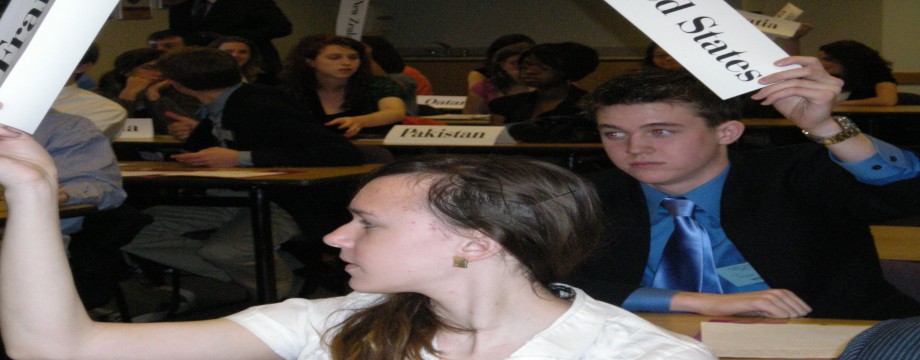This presentation is split into the two basic components of MUN participation: pre-conference preparation and at-conference participation.
Summary.
| Part I: | Pre-conference Preparation |
| Part II: |
At-conference Participation |
| Part III: |
Conclusion |
![]()
Part I: Pre-conference Preparation
Research – sources include:
|
|||||||||||||||
Set up your preparation files, using folders, a binder, or a similar format
|
|||||||||||||||
Save on your computer everything you can – you’ll need a lot of it at the conference
|
|||||||||||||||
| Share research with your group – there’s no need to work alone | |||||||||||||||
Practice speaking in front of the group – there’s no substitute for practice
|
|||||||||||||||
| Mock sessions are the ultimate practice – and do them with other groups when possible |
Part II: At-conference Participation
Start caucusing early
|
|||||||||
When giving a formal speech, make good use of the time
|
|||||||||
Caucusing is where all the work gets done, and it should be done early and often
|
|||||||||
A view of formal caucusing – concentric circles
|
|||||||||
What is your role?
|
|||||||||
The only cardinal sin at the UN – never act alone
|
|||||||||
Don’t write a resolution that just states the problem, work toward a solution to the problem first
|
|||||||||
Whenever possible, don’t condemn
|
|||||||||
Compromise, compromise, compromise
|
|||||||||
Credit others whenever possible
|
Conclusions
| Remember: When at the conference you are a diplomat, and the Distinguished Representative of your country – think and act the part and others will treat you that way | |
| Always keep in mind: A diplomat’s job (among others) is to “make friends and influence people” |
|
| Final advice: Suffer fools gladly |

